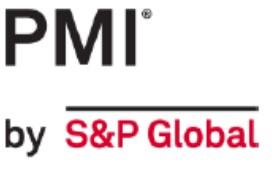The Global Purchasing Managers Index (PMI) for manufacturing, produced by S&P Global and sponsored by J P Morgan, slipped back slightly in April but remains marginally positive at 50.3. This theme of a weakening is repeated in most, but not all of the individual countries and regions we cover in this report. Globally, output and new orders grew, although the latter was concentrated in the intermediate and consumer goods industries, with production in the investment goods industries contracting for the first time in 3 months. The report notes that suppliers’ delivery times are generally easing as supply chains “shrug off the constraints of the Red Sea Crisis”.
This latter point is significant in the context of the UK report where longer suppliers’ delivery times (which, perversely, is seen as a positive to overall activity despite it being driven mainly by shipping delays) is noted as the only one of the five variables in the PMI calculation to have a positive impact. For the UK, the positive PMI in March proved to be fleeting with the reading slipping back to 49.1 in April; this was slightly better than the flash estimate that we published last week but reflects fall in output, new orders and employment in the manufacturing sector. For both output and new orders, both the investment and intermediate goods sectors saw declines while the consumer goods sector was positive.
Despite these negative trends, overall business optimism in the UK manufacturing sector remains positive with just over half of respondents expecting output to increase over the coming year. This is reported as being driven by hopes for a revival in demand, new product launches, efficiency gains and an improvement in market conditions.
The overall manufacturing PMI for the Euro-zone also slipped back to a 4-month low of 45.7 which is broadly in line with the flash estimate. However, there is a mix of trends with 4 of the 8 countries included in this regional total seeing a reading higher than in March and the other 4 recording a reduction. The overall index was dragged down by the sharpest fall in new orders this year and by a shortening of suppliers’ delivery times to the greatest extent in 8 months; on the other hand, while output remained in decline, this was at the slowest pace since last April.
Among the individual countries, both the Netherlands (51.3) and Spain (52.2) recorded their best readings in nearly two years and while they remain firmly in negative territory, both Germany (42.5) and Austria (43.5) had a higher PMI than in March. Moving in the opposite direction, the manufacturing PMI for Italy (47.3), like that in the UK, fell back after just being in positive territory in March; Ireland (47.6) and France (45.3) both saw a further weakening of the PMI and Greece (55.2) also recorded a lower reading.
Elsewhere in the European Union (EU), Czechia (44.7), Poland (45.9) and Hungary (51.8) saw a fall in the manufacturing PMI compared to March while there was an improvement in Romania (51.5) and Sweden (51.4). All of the other European countries that we track saw their reading fall in April compared to the previous month although to varying degrees; Kazakhstan (51.5) was only marginally lower while remaining positive, Turkiye (49.3) fell back below the expansion/contraction threshold for the first time since January and Switzerland (41.4) fell sharply and was at its lowest since August 2023.
In Asia, India (58.8) continues to lead the way although there was a small reduction in the reading compared to March; the ASEAN group of countries (51.0) and South Korea (49.4) also had this trend. In the opposite direction, Australia (49.5), Japan (49.6), China (51.4) and Taiwan (50.2) were all higher than in March, with the latter recording its first positive PMI since May 2022.
Finally in the Americas, the trends were generally downward with only Brazil (55.9) having a better PMI than in March; Columbia (49.2), Canada (49.4), the USA (50.0) and Mexico (51.0) all saw a lower reading in April than in the previous month.
Overall, of the 28 countries and 2 regions that we report on each month, 13 (12 in March) were above the 50 threshold that marks the division between contraction and expansion of activity in the manufacturing sector, plus the USA exactly on the threshold (2 countries were there in March). Although the levels of the manufacturing PMI are not directly comparable (the location either side of 50 is significant), the highest reading in April was in India (58.8) and the weakest was for Switzerland (41.4); Compared to March, the greatest improvement was recorded by Australia and Brazil (both up by 2.3 points) while the most significant decline was in Switzerland (down by 3.8 points), with Italy (down by 3.1 points) also much weaker.
The individual S&P Global PMI reports are available to download on their web-site at https://www.pmi.spglobal.com/Public/Release/PressReleases but we also have a summary charts report which is available to download below. You should note that the PMI readings for Hungary, Sweden and Switzerland are not compiled by S&P Global but can be found with an appropriate internet search (it also means that they are not part of the global PMI calculation).

